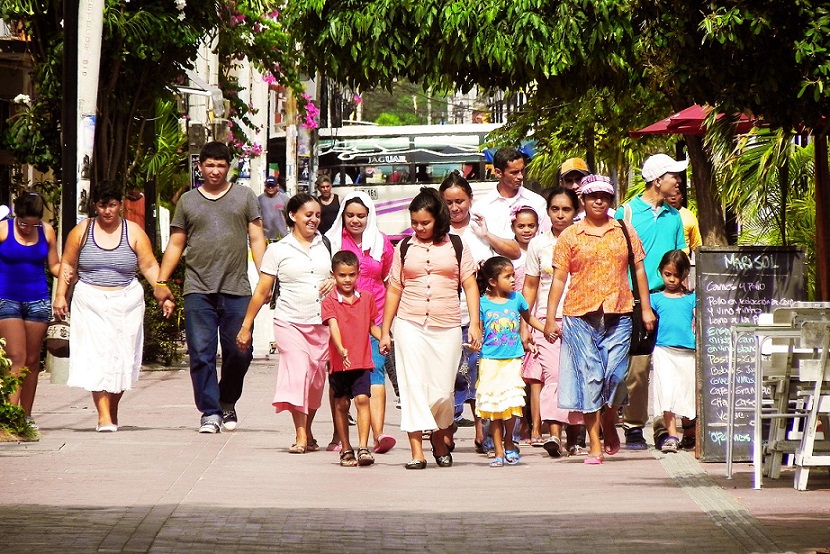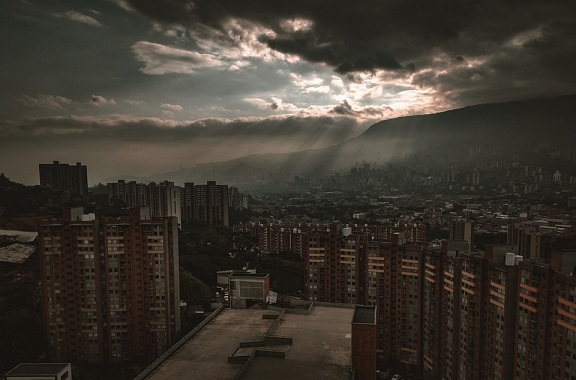This concept has become meaningless and no longer serves to describe what is really happening in the Colombia of the post-Havana agreement.
 Germán Ayala Osorio*
Germán Ayala Osorio*
The recognition of the internal armed conflict in Colombia imposed on its armed participants (paramilitaries, guerillas and state forces) some ethical-political conditions through which it was possible to frame, explain, provide an academic meaning for, justify politically, or to place the military operations, the actions of the guerillas and in general all hostile acts making up this scenario of conflict within the political, academic and military category of Internal Armed Conflict.
That is to say, this political nomenclature constructed a “duty of war” from which the guerrillas gradually distanced themselves, either because of the penetration of drug trafficking into the ranks of the combatants, the impossibility of achieving the political and military triumph that was set as the only possible goal: to become the government, overthrowing the regime in power; and, finally, because of the peace treaty that the state signed with the then FARC-EP.
The latter armistice was a harsh call to the leadership of the Central Command (Coce) to abandon its historically intransigent positions. Likewise, the dismantling of a large part of the FARC-EP’s subversive structure led a large part of public opinion to believe that the armed conflict with the largest guerrilla group was over.
 As time went by, the hostilities and military operations of the aforementioned armed groups deteriorated significantly and irreversibly into a process of moral degradation of their mission.
As time went by, the hostilities and military operations of the aforementioned armed groups deteriorated significantly and irreversibly into a process of moral degradation of their mission.
As a consequence, the concept of Internal Armed Conflict (CAI) began to lose its ethical-political meaning, despite the validity of the objective causes that legitimised the armed uprising in the 1960s, later recognised by President Belisario Betancur Cuartas (1982-1986).
Gonzalo Sánchez, in an interview with the newspaper El Espectador, argues that “we have moved from a state-insurgency conflict to a multidimensional conflict with intersections that are often hard to locate. The conflict today is much more widespread, more heterogeneous and intricate. And it is not only against the state. It has been permeated through complicities, the dwindling of resources for war, international support networks…”
The signing of the end of the conflict (Peace Agreement) between the FARC-EP and the Colombian state is a “rupture” in the course of the armed conflict and in the way its dynamics are understood. Added to this rupture are contextual circumstances that, instead of legitimising the armed struggle, undermine its legitimacy, to the point that today, in a number of sectors of society, the operation of the ELN (National Liberation Army), the only remaining armed group, is considered anachronistic and inappropriate, as are the operations of the FARC dissidents.
 Today’s peace talks with Gustavo Petro’s government restore some of the ELN’s lost legitimacy, while giving some breathing space to the moribund nomenclature of the Internal Armed Conflict (Conflicto Armado Interno).
Today’s peace talks with Gustavo Petro’s government restore some of the ELN’s lost legitimacy, while giving some breathing space to the moribund nomenclature of the Internal Armed Conflict (Conflicto Armado Interno).
The circumstances of what I call “rupture” include the social crisis of 2021, the pandemic itself and its social and economic effects and those left in the collective psyche by this complex health scenario, as well as the accentuation of the peripheral nature of the ELN and its territorial struggle anchored exclusively in the control of drug trafficking routes.
Also, the emergence of new armed groups (dissidents and others) only proves that the use of weapons has become for many members of these illegal armed organisations a modus vivendi, a way of earning a living.
Gone are the self-perceptionsof what their commanders call the social recognition of military control of areas such as Chocó, Catatumbo and Cauca, among others. What is certain is that the supposed liberation of a people subjected to an opprobrious regime, thanks to the armed action of the guerrilla groups, was a chimerical dream from which the ‘elenos’ (as the ELN fighters are known) still do not seem to awaken.
Gonzalo Sánchez, in the same interview, points out that “the promise of transformation by armed means has lost momentum throughout the continent. Refusing to recognise this could cost a lot of useless bloodshed. But let’s be clear, if the modus operandi has lost momentum, its content, the demands and the deferred tasks become even more urgent. This is something that the country’s political, social and economic elites should also understand.
I believe it is time to consider a change in the way of explaining and describing what is happening in Colombia today, given the circumstances described above.
 The concept of Internal Armed Conflict has become meaningless and no longer serves to explain what is really happening in the Colombia of the post-Havana agreement.
The concept of Internal Armed Conflict has become meaningless and no longer serves to explain what is really happening in the Colombia of the post-Havana agreement.
I propose to speak of Conflictividades del Posacuerdo – CP (Post-Agreement Conflicts), or perhaps a Escenario de Múltiples y Asimétricas Violencias – EMAV (Scenario of Multiple and Asymmetrical Violence), or a Escenario Anómico del Posacuerdo EAP (Scenario without Post-Agreement rules), or Violencias Intestinas Despolitizadas – VID (Depoliticised Intercommunal Violences).
It is important to “re-baptise” what is happening in the country in order to focus attention on those political and economic powers, legal and illegal, that benefit from the persistence of illegal groups and their operation in territories where the struggle for land, the control of subsoil wealth and drug trafficking routes are definitive factors for the continuation of the pre-modern conditions in which the guerrillas were born and which the economic, social and political elites insist on extending over time.
The economic policy decisions adopted by the current national government, the fact that Gustavo Petro was a militant in one of the now demobilised guerrilla groups (M-19), aimed at achieving Total Peace, instead of giving a second wind to the armed conflict as many might think, are on the way to diminishing the meaning and legitimacy of the guerrillas.
 Addendum: what is proposed here cannot be read and understood as a denial of the conflict that left more than 500,000 victims, millions of displaced people and hundreds of disappeared.
Addendum: what is proposed here cannot be read and understood as a denial of the conflict that left more than 500,000 victims, millions of displaced people and hundreds of disappeared.
*Germán Ayala Osorio: Social communicator, journalist and political scientist, author of the blog La otra tribuna.
(Translated by Rene Phelvin – Email: renephelvin@gmail.com) – Photos: Pixabay












.jpg)












